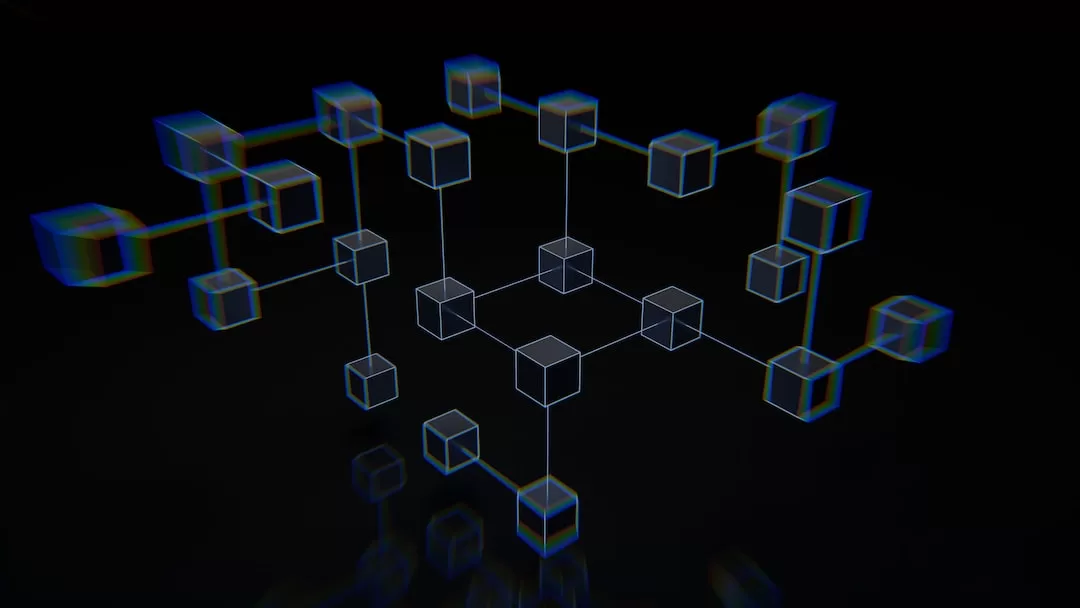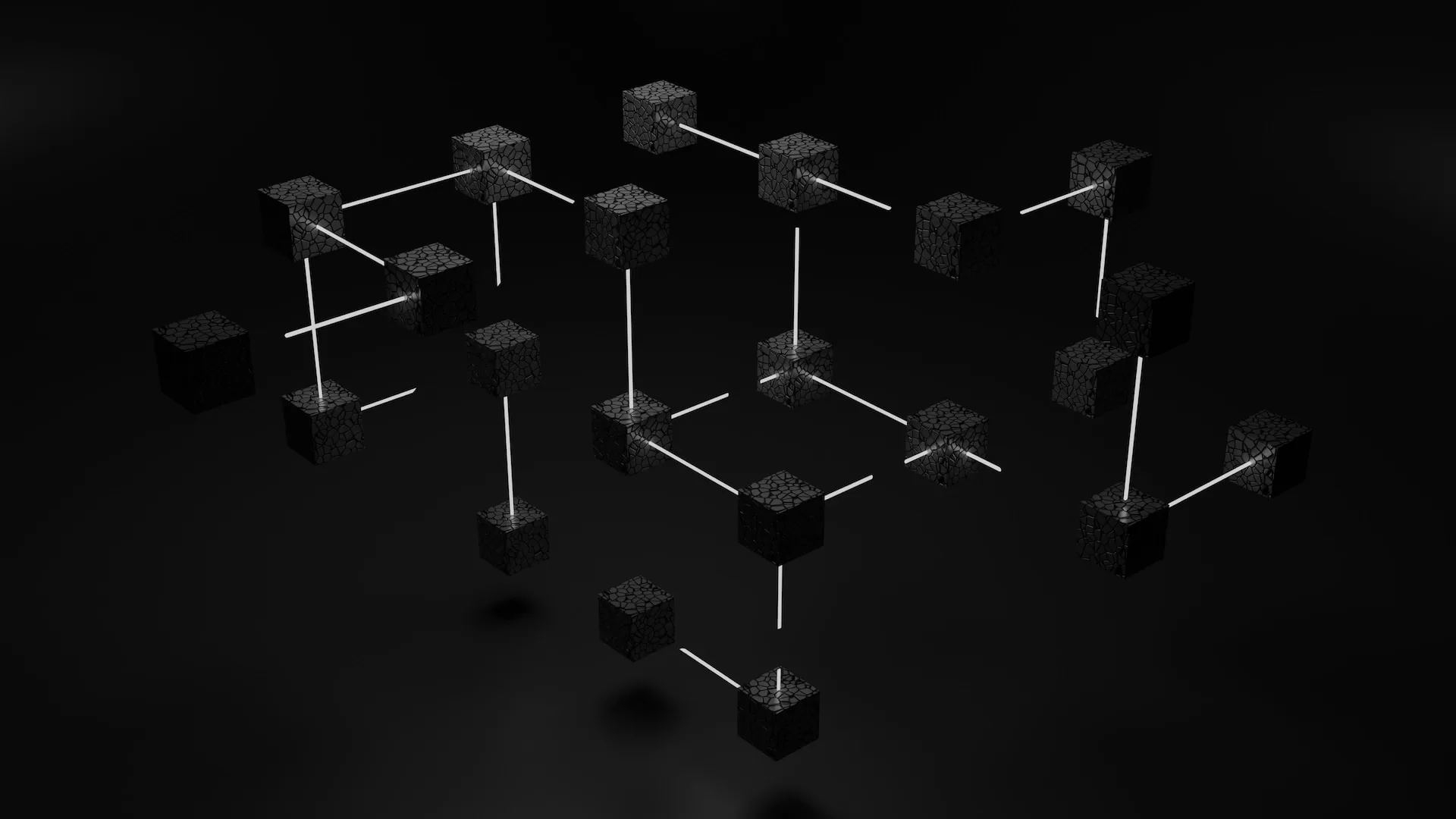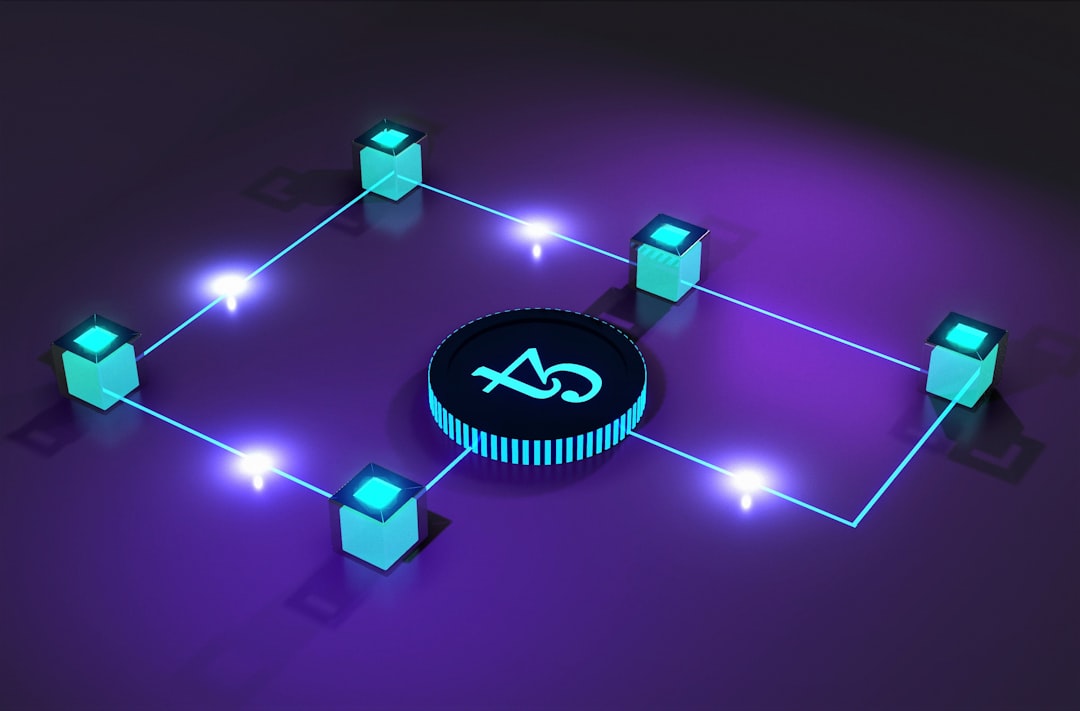Delegated proof of stake (DPOS) is an innovative consensus algorithm and a variant of Proof of Stake that is playing an increasingly important role in blockchain technology. In this comprehensive guide, we will dive deep into delegated proof of stake to understand how it works, why it was created, and the benefits it offers compared to older consensus models like Proof of Work.
With delegated proof of stake, block validation is performed by a limited number of pre-selected nodes called “delegates“. These delegates are elected by the token holders of the blockchain network through a continuous voting process. By delegating their stake to trustworthy nodes, token holders can ensure the network remains decentralized and secure without requiring every node to participate in block validation.
This novel approach makes DPOS incredibly efficient, enabling faster transaction times, better scalability and greater energy efficiency compared to traditional proof of work blockchains like Bitcoin. As blockchain adoption grows, delegated proof of stake is positioned to become a dominant consensus model, especially for enterprise and commercial applications.

What Exactly is Delegated Proof of Stake?
To understand DPOS, we first need to understand proof of stake. Proof of stake is a consensus mechanism where block validators are selected based on the number of coins they hold – their stake in the network. The theory is that nodes with a larger stake in the network have a bigger incentive to validate transactions correctly since they would suffer the most if the network failed or transactions were reversed.
Delegated proof of stake builds on this idea by introducing a voting system where token holders can vote for a limited number of “delegates” to act as validators. Instead of every node validating transactions and blocks, a pre-selected group of trusted delegates take on this responsibility in a DPOS system.
These delegates are given temporary authority to validate transactions and propose blocks based on the number of votes they receive from token holders. If delegates act dishonestly, nodes can vote to remove them instantly. This keeps the network secure while limiting the number of nodes that must participate in consensus.
The first iteration of DPOS was developed in 2014 by Daniel Larimer, co-founder of BitShares and the CTO of Block.one which created EOS. Since then DPOS has been adopted by many blockchain protocols including TRON, Tezos, Lisk and others.

Why was Delegated Proof of Stake Created?
Delegated Proof of Stake was created to solve some of the fundamental limitations of proof of work consensus used by blockchains like Bitcoin and Ethereum.
The main limitations of proof of work include:
- Slow transaction speeds – POW blockchains like Bitcoin can only process 3-7 transactions per second. DPOS blockchains can achieve speeds of over 1000 TPS.
- Energy inefficiency – POW mining consumes enormous amounts of electricity to power the computing needed for crypto mining and to secure the network. DPOS is much more energy efficient.
- Lack of scalability – POW networks face challenges scaling to handle high transaction volumes due to the sequential nature of block confirmation. DPOS offers greater scalability.
- Centralization risks – POW tends towards centralization in mining pools due to the hardware arms race. DPOS allows decentralized control through voting.
By introducing a democracy-based voting system and limiting the validators to a fixed set of delegates, DPOS is able to significantly improve transaction speeds, efficiency, scalability and decentralization compared to proof of work.

How are Delegates Elected in a DPOS System?
Unlike POW where anyone with a mining rig can participate, nodes must be elected as delegates in a DPOS blockchain to validate transactions and propose blocks.
The election process works as follows:
- Token holders in the network can vote for delegates by casting votes weighted by the number of tokens they hold. Similar to “one person, one vote”, their stake acts as voting power.
- Delegate candidates campaign to token holders on why they can be trusted to manage the network. Voters must trust delegates since they have authority over transaction validation.
- At the end of the voting period, a fixed number of delegates with the most votes are elected into active duty on a temporary basis (e.g. 6 months).
- These elected delegates then take turns proposing blocks, validating transactions and adding new blocks to the blockchain according to the protocol rules.
- If a delegate acts maliciously, token holders can immediately vote to remove them and elect a replacement. This keeps delegates accountable.
This voting system ensures control remains decentralized between token holders rather than concentrated in mining pools like POW networks. By carefully selecting trusted delegates, DPOS blockchains can achieve rapid consensus at high throughputs without sacrificing decentralization.

What are the Main Benefits of Delegated Proof of Stake?
Delegated proof of stake offers a number of compelling benefits that make it an appealing consensus choice, especially for commercial blockchain applications:
- Faster transaction speeds – By limiting the number of validating nodes, DPOS achieves consensus much faster. DPOS blockchains can process over 1000 transactions per second, compared to 3-7 TPS for Bitcoin. This makes DPOS suitable for decentralized apps and enterprise use.
- Lower barriers to entry – Participating in POW mining requires expensive custom hardware to be competitive. DPOS is more accessible for average users since voting power is based on tokens held.
- Energy efficiency – DPOS eliminates the massive computing power needed for POW mining, drastically reducing electricity consumption by over 99% by some estimates. This supports sustainability.
- Enhanced scalability – With fewer nodes participating in consensus, DPOS can theoretically scale to thousands of transactions per second. This enables usage for high volume applications.
- Quick finality – Transactions are confirmed irreversibly faster with DPOS than POW where several block confirmations are generally recommended for finality.
- Governance and voting rights – Token holders have a real voice in voting for delegates and even proposing improvements to the network itself though voting.
Thanks to these benefits, delegated proof of stake has quickly emerged as a leading consensus mechanism for blockchain platforms across finance, supply chain, gaming and other industries.

How are Delegates Rewarded in a DPOS System?
Active delegates that participate in block production and validation are rewarded for their service in the form of block rewards and transaction fees, similarly to miners in POW blockchains.
However, since the number of delegates is limited, the rewards are distributed among fewer nodes. This provides stronger incentives for delegates to provide honest validation services on behalf of the network.
Some of the typical incentives and rewards distributed to elected delegates include:
- Block rewards – Delegates earn native tokens just for adding new blocks to the chain. This incentivizes participation.
- Transaction fees – A portion of the transaction fees are allocated to active delegates as an extra incentive.
- Voter rewards – On some DPOS chains like Lisk, voters also earn a share of rewards for electing good delegates. This encourages informed voting.
- Slashing – Delegates can lose a portion of rewards or deposits for malicious actions like double signing or missing blocks. This disincentivizes bad behavior.
The exact economics, incentives and penalties vary between DPOS implementations but are designed to maximize security and honesty from elected delegates. Voting power and rewards should remain decentralized and well-distributed in a properly configured DPOS system.

What are the Potential Risks or Limitations of DPOS?
While delegated proof of stake has many benefits, it also comes with some potential disadvantages to consider:
- Voting collusion – Bad actors could form cartels and collude on votes to attack the network. Proper incentives can discourage this.
- Low voter turnout – If not enough token holders participate in voting, delegates may not represent the community. Apathy could undermine security.
- Forking – With fewer consensus nodes, forking may be more likely on DPOS chains than wider POW networks.
- Centralization – Having fewer validators could lead to some centralization of power over time if delegates converge on a few nodes.
- Regulatory uncertainty – The voting process and delegate rewards may come under regulatory scrutiny in some jurisdictions.
While these risks do exist, they can be minimized through careful protocol design and governance. Overall, DPOS still offers a more decentralized model than POW mining pools or permissioned blockchains. Ongoing research and evolution of DPOS aim to maximize decentralization and security.

Differences between Proof of Stake and Delegated Proof of Stake
Here is a comparison table of the key differences between proof of stake (PoS) and delegated proof of stake (DPoS):
| Attribute | Proof of Stake (PoS) | Delegated Proof of Stake (DPoS) |
|---|---|---|
| Participation | All token holders who stake coins | Only elected delegates by vote |
| Number of Validators | Potentially unlimited | Limited to fixed number of delegates |
| Voting | No voting system | Validators elected by token holders |
| Consensus Speed | Faster than PoW but still limited | Very fast consensus with fewer validators |
| Centralization | More decentralized, wealthy stakers have influence | Some centralization risk among delegates |
| Hardware Required | Can validate on consumer hardware | Delegates may need higher-end hardware |
| Adoption | Widely adopted (Ethereum ,Cardano, Tezos etc) | Less common (EOS, Tron, Lisk) |

Real World Usage of Delegated Proof of Stake
While DPOS is still newer than POW, it has already seen adoption in some influential blockchain projects:
- EOS – The EOS network was designed specifically to showcase DPOS. EOS token holders vote for block producers to validate transactions and add blocks. Block producers on EOS can validate hundreds of transactions per second.
- Tron – The TRON blockchain and cryptocurrency also uses DPOS for consensus. On TRON, 27 elected super representatives are responsible for block production and validation.
- Lisk – Lisk uses DPOS to enable its decentralized apps platform. 101 Lisk delegates are elected and rewarded for processing transactions and blocks.
- Tezos – Tezos uses a modified form of DPOS called “liquid proof of stake” where token holders vote on proposals related to the protocol or delegates.
- Others – STEEM, BitShares, Ark, Rise, ICON and many other projects also implement DPOS in various forms.
As DPOS matures, we will likely see many more blockchain projects and consortiums adopt delegated proof of stake due to its advantages over POW. The flexibility of DPOS also allows projects to customize aspects like the number of delegates or block time for their specific needs.

Conclusion
Delegated proof of stake represents an evolution that could help blockchain technology achieve mainstream adoption. By boosting speed, efficiency and scalability compared to older POW models, DPOS enables blockchains to handle the transaction volumes required for large scale commercial applications.
Projects like EOS and Tron demonstrate that DPOS can already support thousands of transactions per second efficiently. While POW will likely continue for smaller chains like Bitcoin, DPOS offers a compelling path for global enterprises to harness the true capabilities of decentralized and distributed ledgers.
To learn more about the consensus algorithms powering different blockchain protocols be sure to check out our other guides on proof of work, proof of stake, and proof of authority. The world of blockchain consensus mechanisms goes much deeper!
FAQs about delegated proof of stake (DPOS)
What is Delegated Proof of Stake (DPoS)?
Delegated Proof of Stake (DPoS) is a consensus algorithm used in blockchain networks to achieve consensus and validate transactions. It is a variation of the Proof of Stake (PoS) consensus protocol, where block producers are elected by stakeholders to create and validate blocks.
How does DPoS differ from other consensus algorithms?
DPoS differs from other consensus algorithms like Proof of Work (PoW) and Proof of Stake (PoS) in several ways. Unlike PoW, where computational power determines block creation, DPoS provides a more energy-efficient and scalable approach. Additionally, DPoS improves upon PoS by introducing a delegation mechanism where stakeholders can delegate their voting power to chosen block producers.
What is the role of block producers in a DPoS network?
Block producers play a crucial role in a DPoS network. They are elected by stakeholders through a voting process and are responsible for creating and validating blocks. Block producers are rewarded for their services and have a significant influence on the network’s governance and decision-making process.
How does DPoS reach consensus in a blockchain network?
DPoS achieves consensus by using a voting-based mechanism. Stakeholders in the network vote for trusted block producers to create and validate blocks. These elected block producers then take turns to produce blocks in a predetermined order. Consensus is reached when the majority of the network’s voting power agrees on the validity of the produced blocks.
What are the advantages of using DPoS in blockchain networks?
Using DPoS in blockchain networks offers several advantages. It provides fast block confirmation times, high scalability, and energy efficiency compared to consensus algorithms like PoW. DPoS also allows stakeholders to participate in the governance and decision-making processes, promoting decentralization and transparency.
How does DPoS compare to Proof of Stake (PoS)?
While both DPoS and PoS are based on the concept of staking, they differ in the block creation and validation mechanisms. In PoS, the block proposer is selected based on the amount of stake they hold, whereas in DPoS, block producers are elected through a voting process. This voting system in DPoS provides a stronger governance structure and reduces the chances of a single entity gaining control over the network.
Can DPoS be combined with other consensus algorithms?
Yes, DPoS can be combined with other consensus algorithms to create a hybrid consensus mechanism. For example, some blockchain networks use a combination of DPoS and PoW, where block producers are elected through DPoS, but the network also requires a certain level of computational work (PoW) to validate transactions and create blocks.
Is DPoS a decentralized consensus mechanism?
DPoS can be considered a decentralized consensus mechanism as it allows stakeholders to participate in the network’s governance and block producer election process. However, the level of decentralization may vary depending on the specific implementation and the number of elected block producers in a DPoS network.
What impact does DPoS have on blockchain scalability?
DPoS can be used in various types of blockchains, including public blockchains, private blockchains, and consortium blockchains. Its flexibility and scalability make it suitable for different use cases and network requirements.



